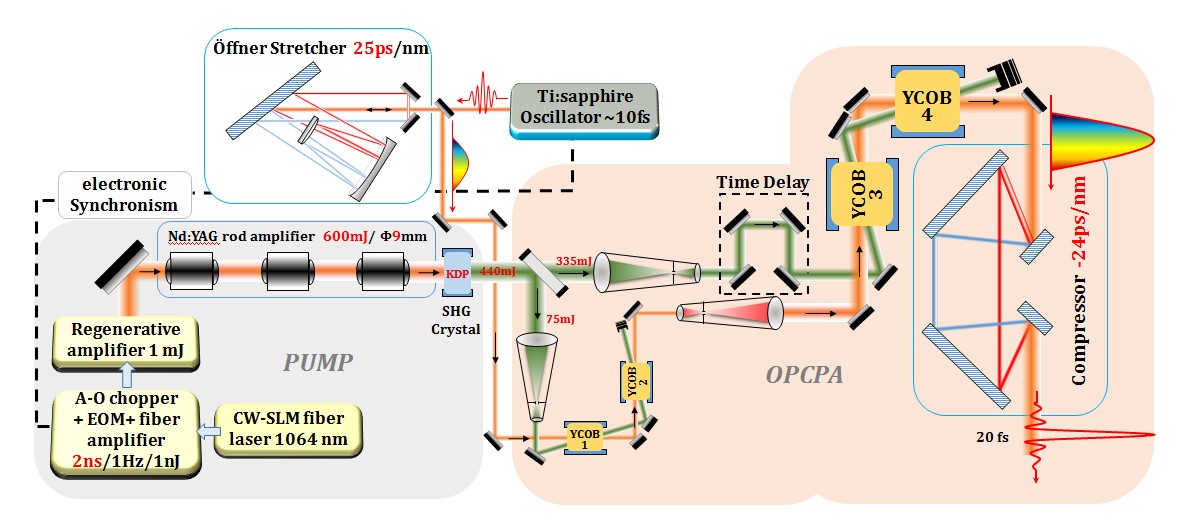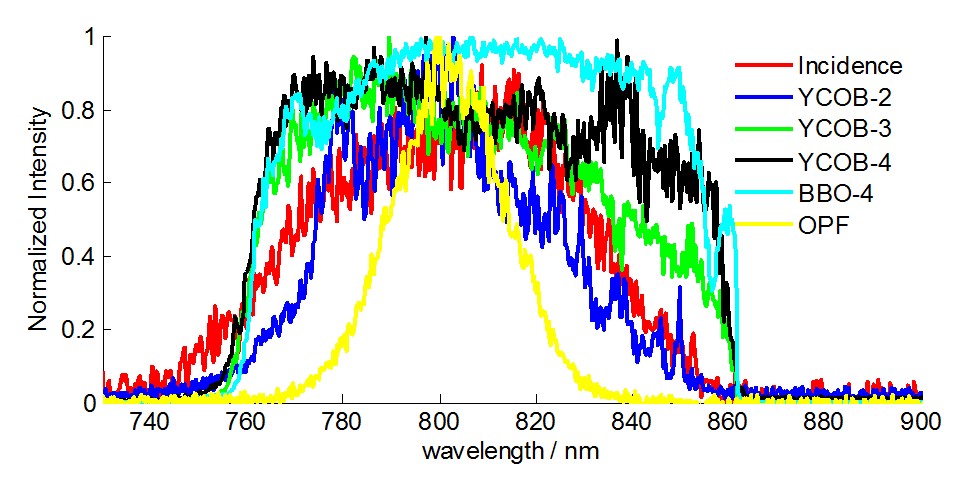Optical parametric chirped pulses amplification (OPCPA) has become the main route of laser facilities above petawatt scale. Currently, there are three nonlinear crystals with diameters up to 100 mm, including Potassium Dideuterium Phosphate (DKDP), Lithium Triborate (LBO) and Yttrium Calcium Oxyborate (YCOB). For signal pulses centered at 808 nm, OPCPA amplifiers based on DKDP and LBO crystals are capable to support spectral width below 100 nm. By contrast, YCOB crystals can theoretically support gain bandwidth exceeding hundred nanometer, and have such excellent physical and chemical properties as non-deliquescence, low thermal expansion coefficient and good mechanical strength.
Recently, researchers from SG-II 5PW in Shanghai Institute of Optics and Fine Mechanics, Chinese Academy of Sciences, cooperating with Shanghai Institute of Ceramics, Chinese Academy of Sciences, have made progresses in OPCPA based on YCOB crystals. The results have been published in Optics Express.
Their study was based on the frontend of SG-II 5PW and YCOB crystal with good optical uniformity was adopted in the experiments. Global optimizations of laser specifications, crystal lengths, phase-matching parameters as well as amplification stages were analyzed.
A total signal gain of 109 was obtained with conversion efficiency of ~40%, and the FWHM bandwidth was over 100nm, supporting a compressed pulse width of 20fs.
YCOB-based OPCPA displays excellent characteristics comparable with that of Beta-Barium Borate (BBO) and it indicates application prospect for the petawatt laser facilities with large aperture YCOB in the future.

Fig.1 Schematic of the YCOB based SG-II 5PW OPCPA system. (Image by SIOM) 
Fig. 2 The normalized spectrums for various cascaded YCOB crystals, and BBO-based OPCPA. (Image by SIOM)
Article Website
https://doi.org/10.1364/OE.385790
Contact:
Mr. CAO Yong
General Administrative Office
Shanghai Institute of Optics and Fine Mechanics, CAS
Email: caoyong@siom.ac.cn